The garret of the Crabtree House still contains Lemma’s favorite chairs, books, and clothing. Grace Davies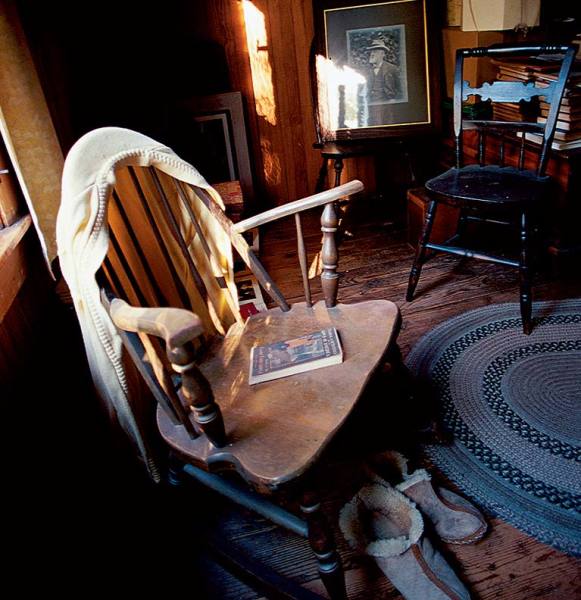
The tale of Crabtree House in Montgomery, New York, revolves around what we might call a menage a quatre: its current owner, Bob Williams, who never met an old house he didn’t like but who took years to decide this could be “the one;” Lemma Crabtree, descendant of the original owners, a never-married, no-nonsense octogenarian; Bob’s blonde, blue-eyed German girlfriend, Heike Grigsby, who bravely bought into endless weekends of hard work; and D. J. Shugars, a cable executive who insisted on renting the house while it was still under repair. Bob, a purchasing agent for a chemical company, served for 10 years as Montgomery’s town historian and is passionately devoted to this tri-village area of about 20,000 an hour and a half northwest of New York City.
In 1901, Lemma’s father, John, walks toward the Crabtree House from his father’s adjacent home. (Photo: Courtesy of Robert L. Williams)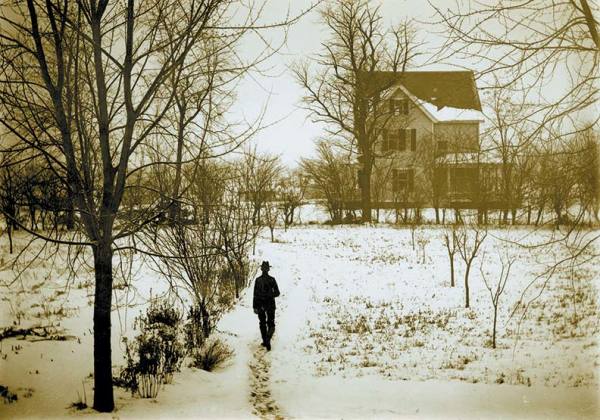
In 1994, putting together a book on the town’s history, Bob phoned Lemma Crabtree, a distant cousin and last living descendant of a family who had owned the town’s yarn mill. The gruff-voiced woman acknowledged that her garret held “a few photos,” which turned out to be 320 negatives taken by her father and grandfather depicting life around the turn of the last century. They ranged from construction of the house itself and shots of other structures in Montgomery to nature walks and ice-cream making by the Crabtree clan.
Later, Bob would find that the Crabtrees also had detailed diaries dating from 1912 (with a reference to the Titanic’s sinking) to 1997. This archive and Lemma’s memories were a treasure trove for any history buff, and Bob became a regular caller at the house of this spinster, then 85. Though Lemma usually made it subtly clear after a couple hours that she had tired of company, over the course of his visits, a bond formed.
The bronze plating on the fireplace cover is thought to be from the American Bronze Powder Company in Bob’s hometown of Verona, New Jersey. Grace Davies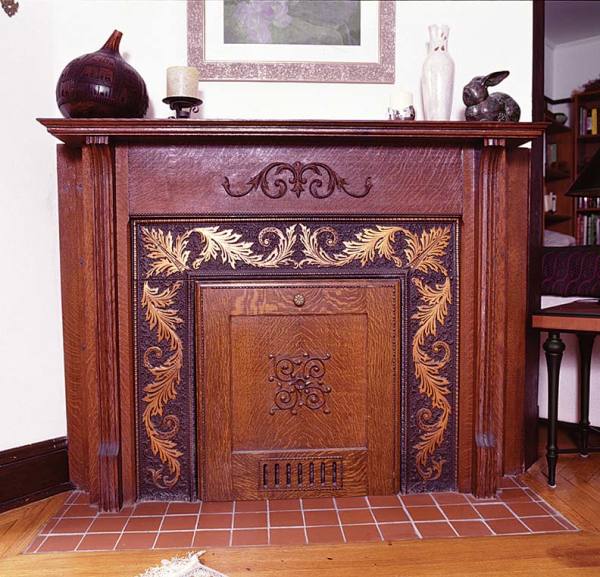
Bob’s marriage was disintegrating, and he admired this tough woman who had graduated from Cornell, served for 30 years as city clerk of nearby Newburgh, was an avid golfer, adored the New York Mets and Laird’s Applejack, and smoked like a chimney. “I told her there were two years that I couldn’t see her for the smoke,” Bob says.
As she aged, he helped her with bookkeeping or ran her bath, and with Heike, took her on outings to her family’s former lakeside cabin, nearby Mohonk Mountain House (where she climbed to the top of the lookout at age 92), and to the ocean for the second time in her life. “She was like a grandmother,” he says, “but without all the aches and pains someone that age would normally have. She was also a friend when I needed one most, and I’m sure she would say the same.”
Since she had no close relatives, Bob became concerned about what would happen to the Crabtree House, a 1900 two-and-a-half-story cross-gable Queen Anne, once Lemma was gone. It was so neglected he saw no future for it except demolition. So Bob hit on a triage plan. He would do some repairs and persuade Lemma to pay for others to keep the house from disintegrating. As with many old houses, the most pressing issue was the roof. “Lemma couldn’t afford to put on a whole new roof, but it was leaking into the wall structure. Where she could see it, her answer was pots and pans. If she hadn’t patched it, I don’t think the house would be here today.”
Before Lemma died, she saw her house accepted by both the New York State and National Register of Historic Places. Grace Davies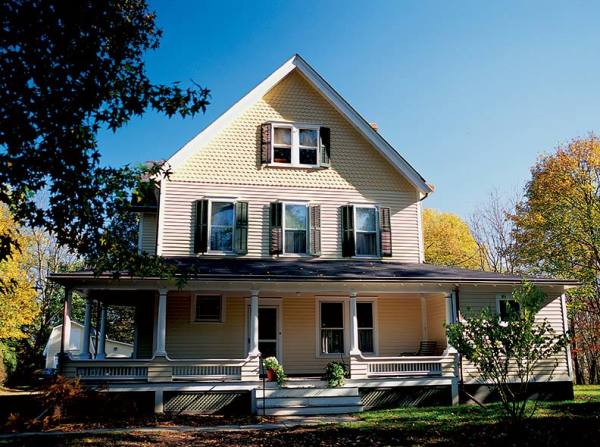
Some repairs were entertaining for Lemma to watch, such as the chimney work that distracted her the day they had to bury her feisty big cat, Striper, and the pleasant crew that redid the 1911 knob-and-tube wiring. When she could, she helped in small ways, like holding open sash windows while Bob repaired broken weights. “That was the important thing—for her to see the house coming back to the way it was, and for her to be involved in it.”
Not all projects were a hit with Lemma. The yard was so overgrown with shrubs and vines that the oil delivery truck was instructed to run its hose from the driveway next door. Rhododendrons tugged at the gutters. Bob thought such dense vegetation also posed crime concerns for a woman living alone. He hired a local man to clean it out gradually but knew he was in trouble the evening an earlier offhand comment to the yard man led to the disappearance of forsythia that had long grown along the road.
On the Dotted Line
Even after years of work, Bob was told that he was making a mistake by buying “this old barn.” Grace Davies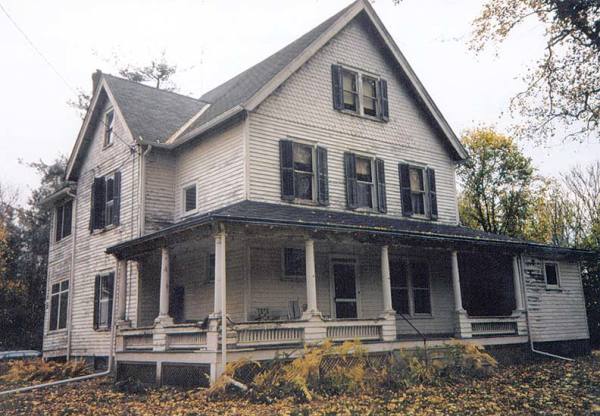
In 1999 Bob and Lemma began to talk about a more serious commitment, though he wasn’t in the market for a house. In 1989, Bob had bought and restored a slightly smaller 1895-96 Queen Anne in the heart of Montgomery, although his ultimate dream was to own a Greek Revival or Federal-style home. Nonetheless, Bob’s buying the Crabtree House with a Life Estate arrangement for Lemma could both protect the house and guarantee her a home for the rest of her days.
The Crabtree House had a lot going for it. It retained many touches added before fires and floods at the mill and then the Great Depression wiped out the family fortune. A 1914 addition closed in the original back porch and added a second-story sleeping porch and larger pantry. Another expansion in 1923 doubled the parlor and dining room and in the latter added a window-seat wall.
The house boasted stained-glass windows in the stairwell and parlor, much of the original door hardware (including decorative cast-iron hinges), and the original oak mantel with its carved oak fireplace cover surrounded by bronze plating. The house has an open feel because the doors between entry, parlor, and dining room are either pocket doors that disappear or glass bifold doors that almost do. Yet there are also cozy nooks, like the tiny bookroom off the parlor.
Bob found more than 300 negatives in Lemma’s attic. The home also held 85 years of journals—some beneath ceilings that were collapsing from a damaged roof. Grace Davies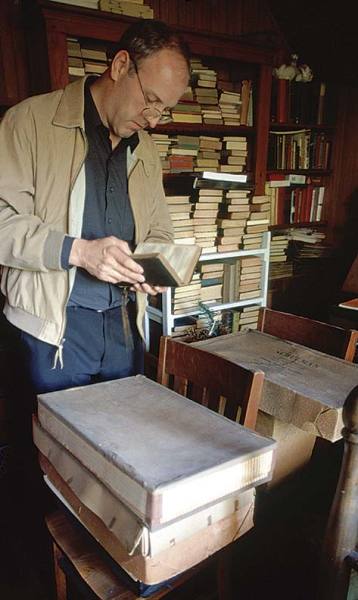
So for both Lemma and the house, Bob signed the purchase agreement and he and Heike continued their work pretty much as usual. They did make a considerable investment, though, in a standing-seam copper roof and gutters, calling in a second contractor when the first round of work led to water damage on the porch.
Throughout the process, Bob applied lessons learned from his previous restoration. “You need to let a house speak to you,” he says, and you also need to leave enough clues for new generations to interpret. So in the Crabtree basement he left the electric system’s knobs and tubes, as well as a door into the former coal room, even though there is now only half a partition into that space.
“The [dividing] wall had termite damage, and the room had no windows, and when I took it down I thought, ‘I really like this.’ But the door had notations in Lemma’s father’s hand about coal deliveries, and it seemed important to leave it.” He and Heike left original Victorian wallpaper and border in a closet; the walls of most rooms shed plaster as newer wallpaper was removed, and Bob called in a pro for the bigger patching jobs.
When Lemma died in the fall of 2001, Bob and Heike began more interior work, including replacing tile ceilings with sheetrock, painting walls, and refinishing the parlor and dining-room floors, a total of about 4,000 square feet. “The finish was worn off because they had never had much carpet, but they had a nice patina that I didn’t want to lose.” He stripped them with a paste stripper and then pad sanded any stained areas, finishing with polyurethane. “It’s a Herculean task, but you just do so much today, and so much the next time.”
A New Resident
Renter D. J. Shugars took one look at the dining area and pictured herself relaxing on the window seat with a good book. Grace Davies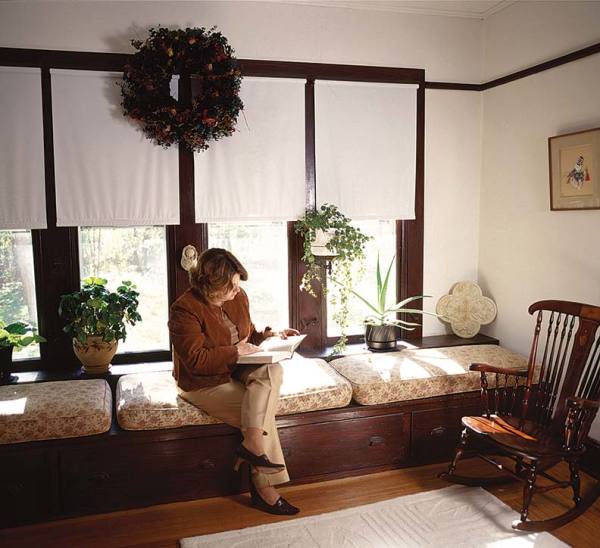
Those tasks completed, Bob thought it was time to move into the Crabtree House and put his other house up for rent (although his plumber several times commented, “I can’t believe you’re giving up that beautiful house for this old barn.”) After many weeks, though, the most promising response he got to his rental ad couldn’t move in until spring—a wait that would be too big a strain on his budget.
Then D. J. Shugars walked through his door. She was being transferred immediately by a cable network, but said that Bob’s current house, with its quirky little doorways and corners, wouldn’t give her any place for her long rows of bookshelves. “Well,” admitted Bob reluctantly, “I do have this other house.” He drove her to the house at night, stopped briefly, and asked, “Have you seen enough?”
D. J. was not to be so easily put off. “It was a winter night,” she recalls. “I didn’t even see the outside until later.” She loved the wraparound porch, the woodwork–especially the stairwell—and the dining room, where she could envision herself reading on the window seat.
Among the features that charmed D. J. on her first visit was the stairwell, which combines Victorian fillips with more straightforward Edwardian-style balusters. Grace Davies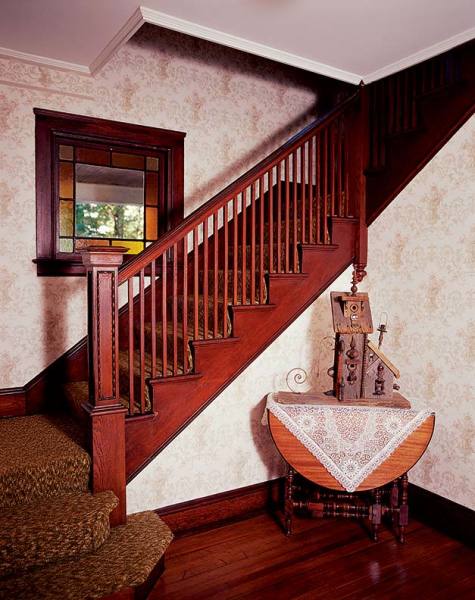
Three years later D. J. shows no signs of moving out. She loves the combination of open and cozy spaces, and the large pantry that gives her space for canned tomatoes and cooking supplies. From the back porch she can view wildlife ranging from birds (including wild turkeys) to rabbits and deer. In spring the deep slope is spangled with hundreds of naturalized daffodils planted by the Crabtrees. Thus D. J. has become yet another partner in this restoration, tolerating Bob and Heike and/or contractors almost every weekend, but also weighing in with what job should get next priority, and—not least—helping to keep the whole project afloat by renting the house.
Bob thinks Lemma’s spirit still inhabits the place, perhaps with that of her parents and sisters. D. J., who never met Lemma, says she’s never felt her presence. “But I think she would approve of another independent woman who loves to read and loves family and friends, living in her house.”







